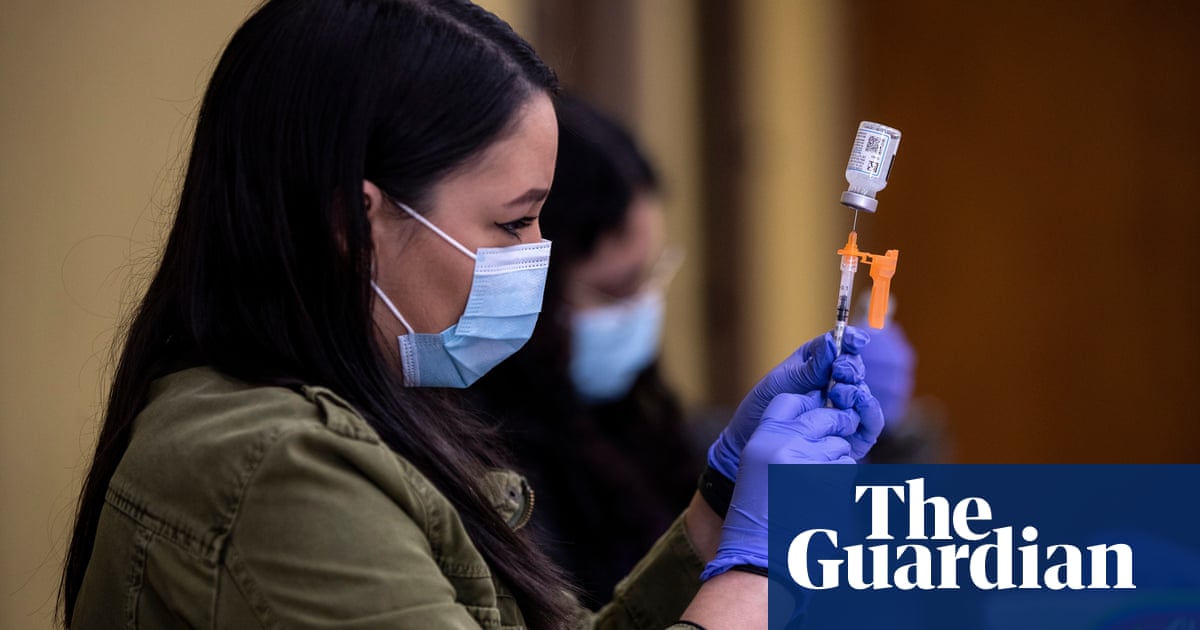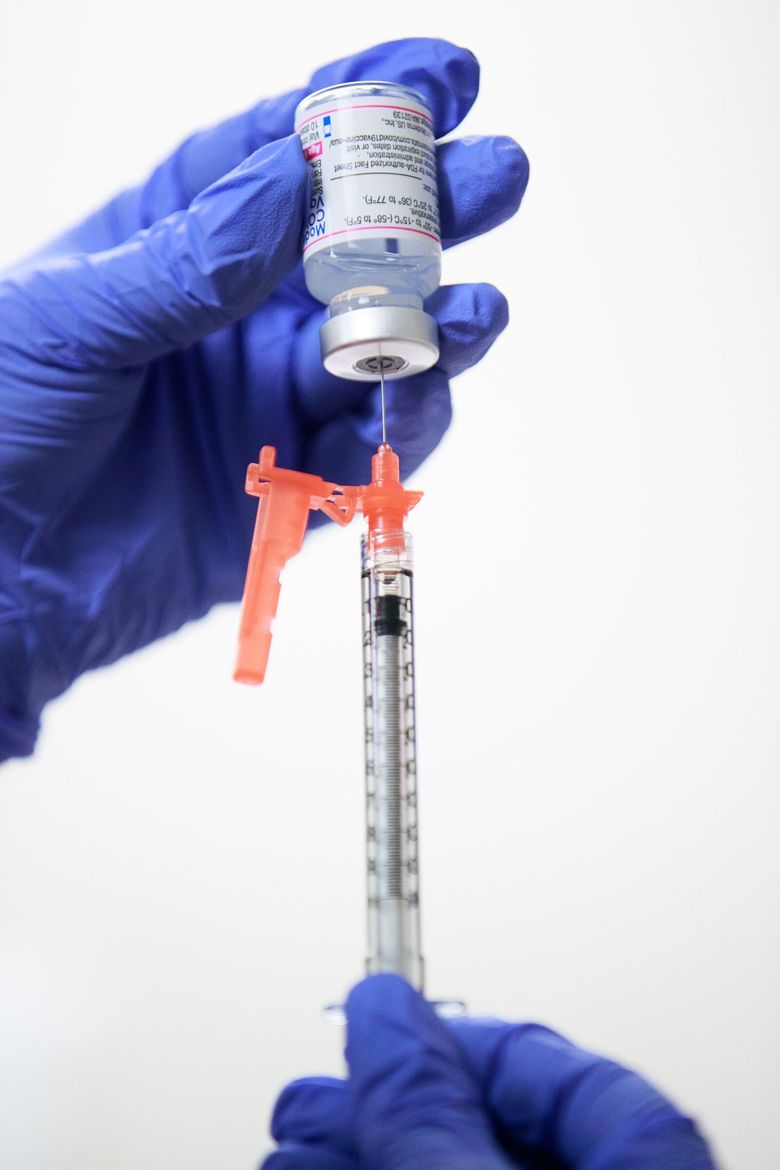The newest COVID-19 vaccine is on its way to Washington, with the first doses set to arrive as soon as next week.
The news is a relief for public health teams preparing for respiratory infection season, but state leaders say distribution delays and unexpected costs could test the first vaccine rollout process since the country’s public health emergency ended.
The arrival of the new shots, approved this week by the Food and Drug Administration and the Centers for Disease Control and Prevention, also serves as the latest reminder that longer-term public health strategies might now regularly include annual COVID shots.
“That’s where we are now,” state Secretary of Health Dr. Umair Shah said in a Friday news conference. “Similar to the flu shot, this updated vaccine really protects against updated variants that are currently circulating.”
A team of leaders from the state Department of Health weighed in this week on what strategies residents should keep in mind as fall approaches, and how the new COVID shot might help protect against severe illness.
What do COVID levels look like in Washington?
While COVID levels remain fairly low in Washington compared to previous spikes, the state’s infection and hospitalization rates have been slowly increasing since July, said state epidemiologist Dr. Scott Lindquist.
As of late August, an average of about 3.4 Washingtonians were being hospitalized per 100,000 people, compared to fewer than 2 per 100,000 in late June and early July. The state’s infection rate, likely an undercount due to the rise in home testing, was about 45.4 per 100,000 in late August — a jump from fewer than 17 per 100,000 in early July.
In comparison, about 28 people per 100,000 were being hospitalized with COVID during the state’s omicron wave in January 2022. During the height of the surge, more than 1,800 people per 100,000 were testing positive for the virus on any given day.
When can I get the updated vaccine?
Because it’s the first COVID vaccine to be rolled out after the end of the national public health emergency, meaning the federal government is no longer purchasing all doses, the distribution process could take longer.
The state Department of Health expects the first doses will land in Washington next week, but providers might not receive shipments until early October.
“It’s really important to be patient and keep checking back with your pharmacy or provider,” said Michele Roberts, the state’s assistant secretary for prevention and community health.
How do I know what community levels of respiratory infection look like?
A new data dashboard is here — and ready to simultaneously track three respiratory viruses this year.
The interactive online tool (st.news/respiratorydata), modeled after the COVID data dashboard the state maintained for the last three years, provides a summary of ongoing disease activity, hospital admissions, emergency department visits and occupied ICU beds for COVID, influenza and respiratory syncytial virus, in addition to other health metrics.
“This major dashboard will be a guide to our respiratory season,” Lindquist said. “As we move out of the COVID-19 pandemic, we need to be thinking of all the lessons we learned to apply to [this season].”
The dashboard also tracks gaps in age, sex and race/ethnicity, and still includes COVID vaccine and wastewater data.
According to recent numbers, “true respiratory season” has yet to start, but health officials are planning to keep a “close eye” on the dashboard and encourage residents to also check in from time to time, Lindquist said.
What shots are recommended to protect against COVID, flu and RSV?
Most Americans — everyone 6 months and older — should get the updated COVID shot, advisers to the Centers for Disease Control and Prevention decided this week.
The new and improved vaccine will replace the former bivalent messenger RNA vaccine, approved last year but no longer authorized. Anyone 5 and up, regardless of previous vaccination, can receive a single dose of the updated shot, as long as it’s been two months since their last dose of any COVID shot.
“The virus that causes COVID-19 is always changing and protection from vaccines does decline over time,” Roberts said. “Receiving an updated COVID vaccine increases protection … against the variants that are currently responsible for the most infections and hospitalizations in the U.S.”
For children between 6 months and 4 years old, the vaccines are slightly different, and the number of doses will depend on their age and previous vaccinations, Roberts said. Previously vaccinated kids under 4 can receive one or two doses of the new shot, while unvaccinated kids can receive three doses of the updated Pfizer vaccine or two doses of the updated Moderna vaccine, she said.
Roberts encouraged families to check with their health care provider with any questions or concerns.
Health officials also recommend flu vaccines for those over 6 months old, as well as a new monoclonal antibody treatment that protects against severe RSV infection in infants and children up to 2.
In addition, two new RSV vaccines have been licensed for adults 60 and older, both of which can be administered alongside other vaccines, like flu and COVID, Roberts said.
How much will the new vaccine cost now?
Most health insurance companies continue to cover the cost of COVID vaccines, but those who are un- or underinsured have options for free shots at community vaccine clinics and certain pharmacies. Find sites near you by visiting st.news/vaccinelocator.
All children under 18 are also eligible for no-cost vaccines through federal childhood vaccination programs. For more information visit st.news/vaxprograms.
Why is it so hard to find rapid tests, and where can I test myself regularly?
Access to testing looks very different now than a year ago, Shah said. Not all health insurers are covering the cost of tests, unless patients make a clinic appointment and get tested in person. Meanwhile, pharmacy supply varies — and prices can add up, especially when getting multiple test kits.
A few options still exist for finding free or low-cost tests, said Lacy Fehrenbach, the state’s chief of prevention, safety and health. The federal government runs a program called Increasing Community Access to Testing, which distributes tests to pharmacies and clinics across the country.
In Washington, some organizations continue to work with the state to distribute tests within communities, but Fehrenbach recommended reaching out to local health departments directly for more information. K-12 school districts also have access to free at-home testing, in addition to rural pharmacies and first responder agencies.
“But we know it is not quite as easy as it was during the public health emergency to access free and low-cost tests,” Fehrenbach said.
Where should I mask now?
Masking is no longer required in any indoor public spaces in Washington, except in some high-risk health care settings.
But state health leaders still encourage the use of high-quality, well-fitted masks when taking indoor public transit, and anywhere inside when community hospitalization levels reach a certain level, according to the Department of Health’s recently updated masking guidance.
If you have COVID symptoms or a positive test, or were recently exposed to someone with COVID, health officials also recommend masking up.
“Masks are great for all of these respiratory viruses,” Fehrenbach said. “Keep your masks handy, and wear one in crowded or confined settings if you’re at risk for severe disease or when disease rates are high.”



